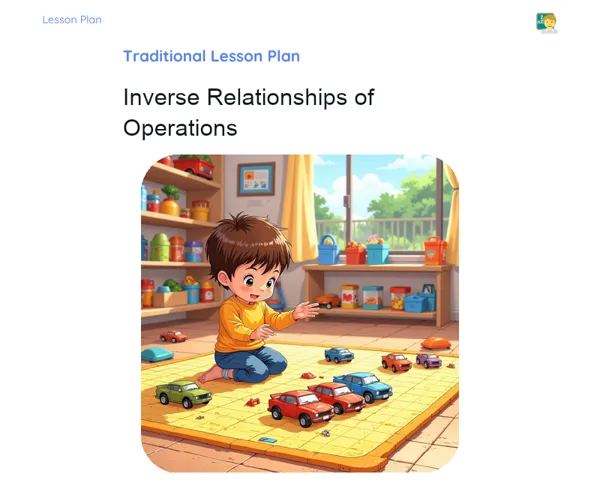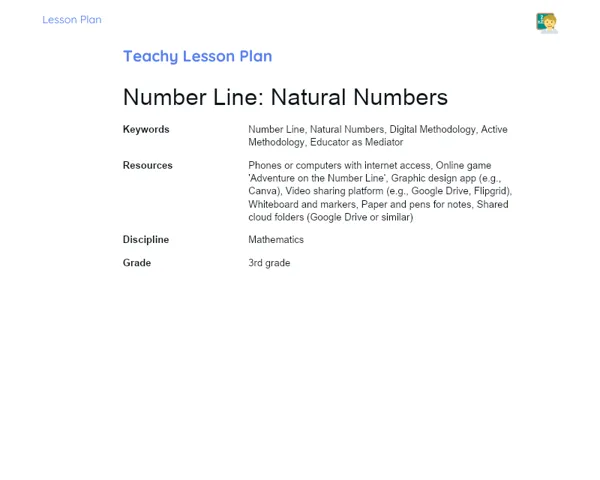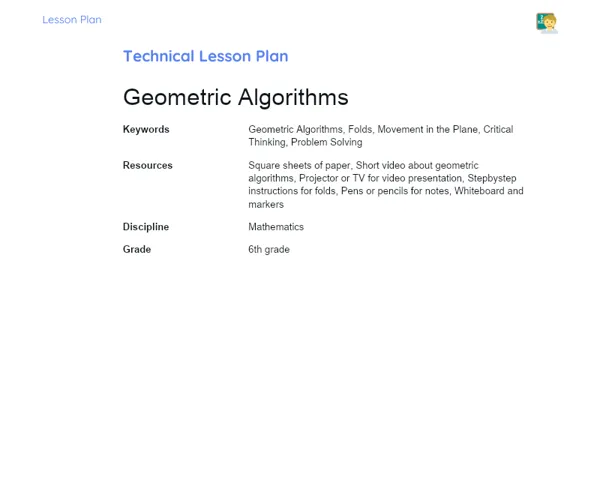Lesson Plan | Socioemotional Learning | Statistics: Sample Surveys
| Keywords | Statistics, Sample Research, Census Research, Sampling Methods, Sampling Error, Socio-Emotional Skills, RULER, Self-Awareness, Self-Control, Responsible Decision-Making, Social Skills, Social Awareness, Guided Meditation, Teamwork, Emotional Regulation |
| Resources | Copies of the fictional sample research study, Material for note-taking (paper and pen or electronic devices), Audiovisual resources for the theoretical presentation (projector, slides, etc.), Quiet environment for the guided meditation, Clock or timer to manage the time of the activities |
| Codes | - |
| Grade | 11th grade |
| Discipline | Mathematics |
Objective
Duration: 10 to 15 minutes
The aim of this stage is to provide a solid foundation on the topic to be studied, highlighting the skills necessary for understanding sample research. This initial session also sets the stage for developing socio-emotional competencies, connecting mathematical content with students' emotions and social skills, in line with the RULER methodology.
Objective Utama
1. Understand the concept of sample research and its applications.
2. Differentiate between sample research and census research.
3. Extract and interpret information from a sample research study.
Introduction
Duration: 20 to 25 minutes
Emotional Warmup Activity
Guided Meditation for Focus and Concentration
The chosen emotional warm-up activity is Guided Meditation. Guided Meditation is a practice that helps promote focus, presence, and concentration among students. Through verbal guidance, students are led into a state of relaxation and mindfulness, which facilitates learning and understanding of the content to be covered in class.
1. Preparing the Environment: Ask students to sit comfortably in their chairs, with their feet on the ground and their hands resting on their thighs. Ensure the environment is quiet and, if possible, dim the lights to create a peaceful atmosphere.
2. Introduction: Briefly explain the purpose of the guided meditation, highlighting that the practice will help improve focus and concentration during the class. Emphasise that meditation is a useful tool for self-awareness and self-control.
3. Beginning the Meditation: Start by asking students to close their eyes and take a few deep breaths. Guide them to inhale through the nose and exhale through the mouth, allowing each breath to bring a sense of relaxation.
4. Guiding the Meditation: With a calm and gentle voice, ask students to concentrate on their breathing. Instruct them to observe the air entering and leaving their bodies, noting how their body feels with each breath. Continue guiding them, suggesting they imagine a peaceful scene, like a tranquil beach or a field of flowers, where they can feel safe and at ease.
5. Closure: After about 5 to 7 minutes, start bringing students back to the classroom by asking them to slowly move their fingers and toes. Instruct them to open their eyes gradually and reacquaint themselves with their surroundings. Conclude the activity by thanking everyone for their participation and emphasising the importance of taking moments to pause and breathe throughout the day.
Content Contextualization
Statistics and sample research are part and parcel of our daily lives, from public opinion polls to scientific studies that influence health and education policies. Understanding how sample research works and how it differs from censuses is crucial for interpreting data in a critical and responsible manner. Additionally, by working with statistics, we develop key skills like informed decision-making and social awareness, as we learn to recognise and evaluate differing perspectives and information.
By linking mathematical content to real-world situations, students can appreciate the practical relevance of sample research. For instance, when analysing the results of a survey on teenagers' eating habits, students not only apply statistical concepts but also engage with health and wellness issues, promoting learning that resonates with their lives.
Development
Duration: 60 to 75 minutes
Theory Guide
Duration: 25 to 30 minutes
1. Definition of Sample Research: Explain that sample research is a data collection method where a representative part of the population is selected to generalise information about the entire population. Use the analogy of soup: just as a spoonful can indicate the flavour of the whole pot, a sample can hint at characteristics of the population.
2. Definition of Census Research: Describe that census research collects data from all members of the population. Differentiate it from sample research, emphasising that while a census is more accurate, it is also more expensive and time-consuming.
3. Advantages and Disadvantages: List the advantages of sample research (lower cost, speed, less work) and the disadvantages (possibility of sampling errors, need for a representative sample). Do the same for census research, underscoring its accuracy and high cost.
4. Sampling Methods: Explain the main sampling methods (simple random, stratified, systematic, and cluster sampling). Use practical examples for each type. For example, demonstrate simple random sampling by drawing names from a hat.
5. Sampling Error: Define sampling error and explain its potential impact on research study results. Use simple numerical examples to illustrate how small samples can lead to significant variations.
6. Real-World Application: Present an actual example of sample research, such as a public opinion poll. Show how the data is collected, analysed, and interpreted.
Activity with Socioemotional Feedback
Duration: 30 to 35 minutes
Analysing Sample Research
Students will be divided into groups to analyse a fictional sample research study about teenagers' reading habits. They will identify the type of sampling used, calculate the sampling error, and draw conclusions from the provided data. The activity aims not only to apply theoretical knowledge but also to develop socio-emotional skills through teamwork and reflection on the importance of informed decision-making.
1. Group Formation: Divide the class into groups of 4 to 5 students.
2. Distribution of Material: Give each group a copy of the fictional sample research study.
3. Reading and Discussion: Instruct the groups to read the study and discuss the following questions: What type of sampling was used? What could the sampling error be? What conclusions can be drawn from the data?
4. Critical Analysis: Ask the groups to critically analyse the research, considering potential biases and limitations.
5. Presentation: Request that each group present their conclusions and reflections to the class.
Discussion and Group Feedback
After the presentations, facilitate a group discussion using the RULER method. Recognise the emotions that students felt while working in groups and presenting their findings. Ask them how they felt during the discussions and when critically analysing the data. Understand the root causes of these emotions, discussing whether they stemmed from the topic's complexity, peer interactions, or the pressure of presenting. Name the emotions accurately, helping students differentiate between stress, anxiety, enthusiasm, etc. Express that all these emotions are valid and part of the learning process. Encourage students to regulate these emotions moving forward, seeking strategies to cope with stress and anxiety, like deep breathing or effective time management.
Conclusion
Duration: 10 to 15 minutes
Reflection and Emotional Regulation
Suggest that students engage in a written reflection or participate in a group discussion about the challenges faced during the class. Ask how they felt regarding teamwork, data analysis, and presenting their conclusions. Encourage them to write or talk about how they coped with their emotions during these activities and what strategies they used to manage stress, anxiety, or other feelings. Highlight the importance of recognising and expressing emotions appropriately, and invite them to share a strategy that worked well for them.
Objective: The objective of this subsection is to encourage students to self-evaluate their emotional experiences during the lesson, helping them to identify effective strategies for dealing with challenging situations. By reflecting on how they managed their emotions, students can enhance their self-awareness and self-control—essential skills for academic and personal success.
Glimpse into the Future
Conclude the lesson by asking students to set personal and academic goals related to the content covered. Explain that these goals should be specific, measurable, achievable, relevant, and time-bound (SMART). For example, an academic goal might be 'Improve my ability to interpret statistical data in sample research', and a personal goal could be 'Practice deep breathing techniques when feeling anxious during presentations.'
Penetapan Objective:
1. Better understand sampling methods and their applications.
2. Enhance the ability to critically analyse sample research studies.
3. Develop skills to work collaboratively in teams.
4. Practice emotional regulation techniques during challenging situations.
5. Apply the knowledge gained in real-life situations. Objective: The objective of this subsection is to strengthen students' autonomy and encourage the practical application of learning, promoting continuity in academic and personal development. By setting clear and specific goals, students can direct their efforts more effectively, increasing their chances of success both inside and outside the classroom.



